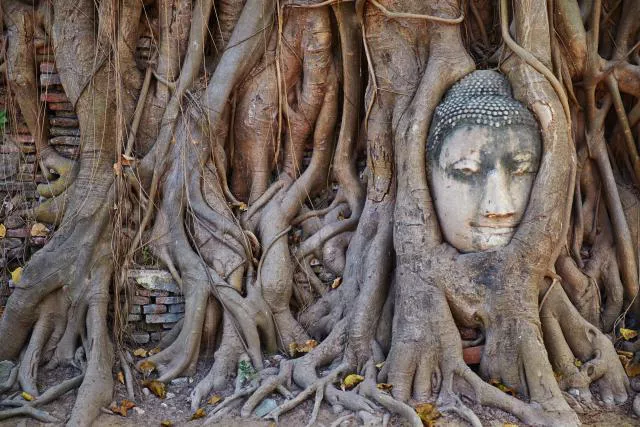Summary of Top UNESCO World Heritage Sites in Asia
Home to ancient civilizations and a diverse geography, Asia boasts a mind-boggling number of UNESCO World Heritage Sites. The Paris-based United Nations Educational Scientific and Cultural Organization has its hands full trying to preserve culturally significant sites throughout Asia.
Choosing from the many World Heritage Sites in Asia can be daunting, but a few top UNESCO sites shine above the rest. Consequently, grab your camera, pack extra energy, and get yourself to one or all of these fascinating places!
01. The Great Wall of China

Contrary to popular belief, the Great Wall of China is not visible from space. Regardless, it is the longest man-made structure in the world and worth seeing while here on Earth.
Legend has it that the original builders followed the tracks of a dragon to determine the path of the wall. The journey was not easy; more than a million workers perished during construction, and the Mongols ultimately circumvented the wall to conquer China.
The Badaling section of the Great Wall, located 40 miles northwest of Beijing, is the busiest. To avoid tourist crowds, consider exploring other sections of the Great Wall, which range from easy to extremely challenging.
02. The Taj Mahal

The Taj Mahal was constructed with one element not found in many World Heritage Sites: love. India’s most famous landmark was built by Emperor Shah Jahan in memory of his wife Mumtaz Mahal, who died after giving birth to their 14th child. The emperor, deeply grieved, was inspired to create what is widely considered the most beautiful structure in the world.
Constructed in 1653 during the Mughal Empire, the Taj Mahal became one of the new Seven Wonders of the World in 2007, attracting nearly 4 million tourists who admire its white marble and intricately carved reliefs. To experience the beauty of the Taj Mahal, travel to Agra, roughly 125 miles from Delhi.
03. The Forbidden City

The Forbidden City in Beijing, a UNESCO World Heritage Site since 1987, is one of the most visited sites in China. Sprawling across 7.8 million square feet, this vast complex features 980 buildings, offering a test of stamina for any sightseer.
Construction of the Forbidden City began in 1406 and lasted 15 years, involving more than a million workers. It was home to 24 emperors and remains one of the most unforgettable sites in Asia today.
04. Angkor Temples of Cambodia

Often mistaken for a single temple, Angkor actually comprises hundreds of temple sites scattered across a 600-square-mile area in Cambodia. While only a few have been restored, many archaeological wonders and Buddha statues remain reclaimed by the jungle. The vine-strangled bricks of Ta Prohm, famous for its appearance in the movie Lara Croft: Tomb Raider, showcase the entrance to adventure in Southeast Asia.
Constructed in the early 12th century, every inch of Angkor temples is adorned with detailed carvings that tell mysterious tales, making it a must-see destination for adventurous travelers. Angkor Wat, the epicenter of this UNESCO World Heritage Site, is located just three miles from Siem Reap.
05. Ayutthaya, Thailand

Explorers in the 16th century were so impressed by Ayutthaya’s size and influence that they referred to the city as the “Paris of Southeast Asia.” This ancient capital of Siam, now modern-day Thailand, thrived from 1351 to 1767.
Despite being heavily fortified by rivers on all sides, Ayutthaya was eventually sacked by Burmese invaders, resulting in the establishment of a new capital in Bangkok an hour south.
Today, visitors flock to this UNESCO World Heritage Site to explore its ruins, which coexist with a modern city. One of the premier attractions is the sandstone head of an ancient Buddha statue, uniquely preserved by a tree that grew around it, leaving the head intact.





